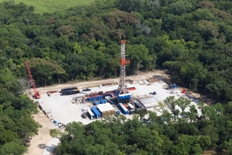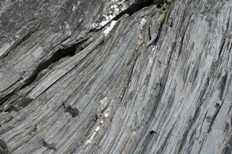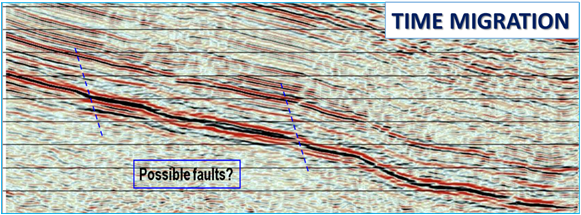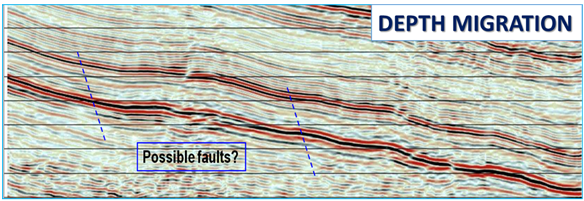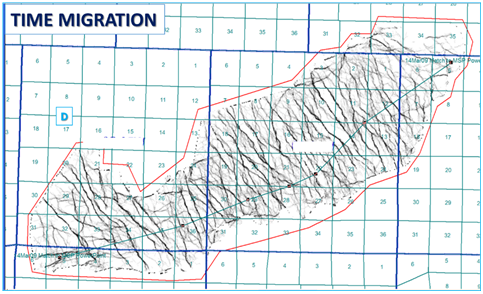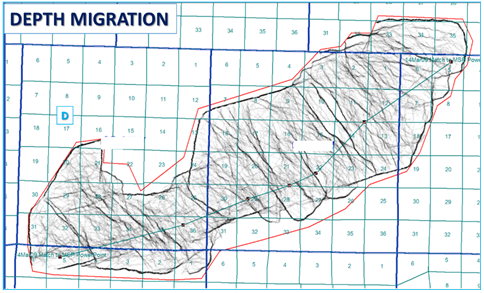Shale Resources consulting
A&A Geophysical/ Seismic Inversion Consulting Services for Unconventional/ Shale Gas and Oil, and Tight Gas and Oil, Resources Evaluation, Development and Optimization
The high-level and seasoned geophysical/ seismic inversion consultants of A&A Consulting Team are available to help our clients, around the world, with all aspects of evaluation, development and optimization of their unconventional/ shale oil and gas resources in regards to seismic and other remote-sensing techniques. 3D seismic data has particular promise to aid in the evaluation of lithologies and stress fields (fractures), with the objective of finding 'sweet spots', for drilling locations, in highly heterogeneous reservoirs.
The Promise: There are numerous case histories of fault interpretations and seismic attributes (e.g. curvature) that are combined with prestack seismic inversion to define geometries and combinations of rock properties such as Young’s Modulus and Poisson’s Ratio (or lambda-rho and mu-rho) to delineate optimal reservoir properties for “unconventional” production. More elaborate methods may be used to define azimuthal (HTI) directions and intensities in the stress field, commonly linked with fracturing. These may be calibrated to yield estimates of direction and values of the minimum closure stress for frac-stage planning.
The Reality: The appropriate application of seismic data to evaluate the subtle expressions of unconventional plays remains a challenge. Many consulting firms and seismic acquisition/processing companies advertise advanced attributes that purport to highlight “production sweet spots”. However, before implying reservoir properties from the seismic data, it is critical to evaluate the limitations of the 3D acquisition and subsequent data processing to ensure the information is fit-for-purpose.
Acquisition: Often, economically-constrained acquisition geometries are inadequate to allow for a data-processing flow that can even capable of preserving relative amplitudes. Techniques such as “5D Interpolation” can only mitigate acquisition limitations that impact the imaging and subsequent formation of seismic attributes.
Processing: A fundamental decision often disregarded is the choice between Prestack Time Migration (PSTM) and Prestack Depth Migration (PSDM). If the local velocity complexity exceeds ranges established by A&A, the subtle attributes used for unconventionals cannot be extracted with confidence after PSTM. PSDM is mandatory, two examples follow. Figure 1A shows a PSTM section in an “unconventional” play. Fault avoidance on the PSTM, one of the simplest metrics we can ask of our seismic data, indicates complex faulting that will impact the planning of laterals. Figure 1B shows the equivalent PSDM section. The “faults” seen on the PSTM are revealed as artifacts caused by small lateral-velocity variations. Indeed, careful evaluation of the PSDM shows the location of several small-throw faults blurred in the PSTM image.
Figure 1A: PSTM in an “unconventional” play. Note the apparent fault complexity.
Figure 1B: PSDM in an “unconventional” play. No PSTM artifacts, true structural configuration visible.
The structural differences between PSTM and PSDM (Figures 1A and 1B, respectively) make it evident that any attempt to use PSTM to extract fault patterns, or to employ attributes such as curvature that imply sub-seismic faults or local stress fields, is likely to introduce risk into the decision-making process.
Azimuthal Analysis: As just illustrated, basic attributes may be compromised with PSTM. Unfortunately, it is common industry practice to attempt to derive even more complex attributes from the seismic that imply directional variation in the stress fields and/or the fracture patterns. To extract azimuthal information, data are usually processed to form Common Offset Vector Tiles (COVT) where the seismic acquisition geometry is under even great scrutiny regarding its fit-for-purpose. If the A&A evaluation of the acquisition geometry indicates sufficiency, prestack measurements may be made to indicate azimuthally-varying P-wave interval velocities and/or AVO with azimuth (AVOAz) analysis to infer the azimuthally-varying Shear Impedance. Note that most prestack analyses are done with (A&A-vetted) 3rd-party specialists. This ensures access to the state-of-the-art versions of these rapidly-evolving attributes, not just the use “home-grown” tools.
The importance of choosing correctly between PSTM and PSDM is illustrated in another unconventional play. Fault avoidance and fracture detection are critical seismic attributes usually derived with seismic edge detection followed by “Ant Tracking” (trademark of Schlumberger). Figure 2A shows a PSTM horizon-extracted Ant Track attribute. Note the strong NW-SE fault trends that require tortuous lateral trajectories to avoid. However, Figure 2B shows the equivalent PSDM horizon-based attribute. Not only are the faults less prevalent, but more subtle, with intersecting fracture trends that make for a more flexible development program. Any attempt to perform prestack azimuthal velocity analysis or inversion would yield even more exaggerated distortions than the simple structural attributes extracted.
Figure 2A: Horizon Extraction from PSTM Edge Detection + Ant Tracking in an “unconventional” play.
Figure 2B: Horizon Extraction from PSDM Edge Detection + Ant Tracking in an “unconventional” play.
The Road Forward: “Sweetspot” Definition: Once the validity of the data is evaluated by A&A, the basic approaches to unconventional evaluations proceed in a step-wise manner. The flow is from simple, stable attributes to more complex attributes. The A&A evaluation will have the following components:
Database Evaluation: Prior to extracting attributes, A&A performs an intense database review to determine the consistency of the seismic horizon interpretations to the well-tops. This includes well-log reviews, synthetic seismogram ties, and determination of the seismic data polarity and phase. Since A&A always solicits client interactions, the evaluations may be performed at the client location with their interpretation software, or created and documented by A&A using Petrel.
Basic Structural Attributes:
· Structure and Thickness maps
· Fault sets
· Seismic Curvature, Edge Detection, Relative Acoustic Impedance, Quantitative Interpretation (QI)-determined or client-proprietary attribute formation. Note that QI refers to the seismic attribute being linked to a desirable reservoir property.
· Horizon-based attribute extractions as appropriate
Advanced Attributes:
· Poststack or prestack (AVO) inversion for absolute acoustic and shear impedance; density if supported by data.
· AVOAz (azimuthal AVO) prestack inversion for azimuthally-varying shear impedance for stress field and/or fracture direction and intensity.
Well Log to Seismic Attribute Calibration:
· The A&A Consulting Team will review the well data and seismic attributes to create integrated (log calibrated) attributes as part of the subsequent Reservoir Model.
Depth Calibration:
· Whether PSTM or PSDM data are used, the interpretations, seismic data, and the extracted attributes including inversions, must be precisely tied to the well tops. This is part of the Depth Calibration process developed by A&A and performed in Petrel, or the client software upon request.
To put high-level and seasoned geophysical/ seismic inversion consultants of A&A Consulting Team on your company's challenging shale gas and oil, and tight gas and oil, resources evaluation, development and optimization projects, around the world, and/or to provide customized state-of-the-art training, in the technology and practice of seismic inversion, to your company's geophysical staff, please contact us.



